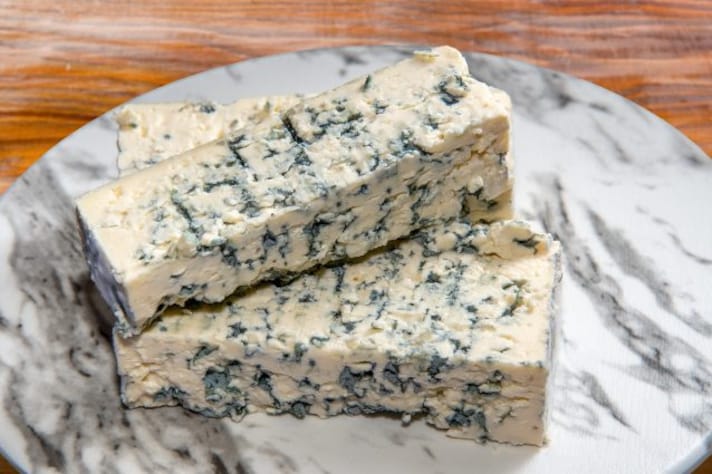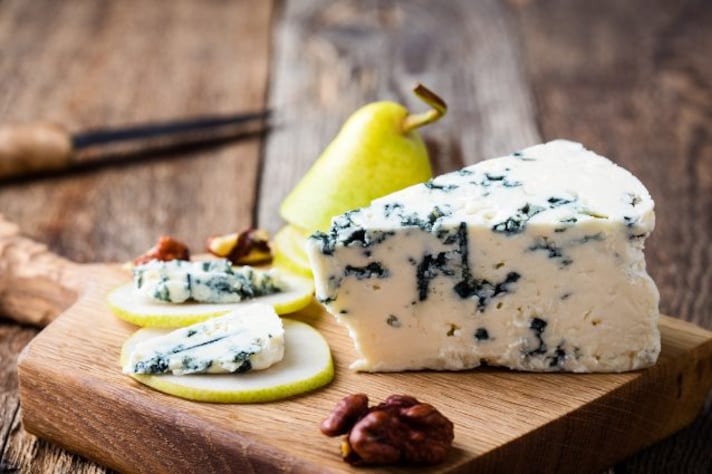If Blue Cheese Smells Like Feet, Why Do People Love It?
Blue cheese is notorious for its strong, often foot-like smell, yet it remains a favorite for many. Its complex flavor, creamy texture, and cultural significance make it a unique delicacy. Despite the odor, blue cheese offers a delightful flavor profile that pairs wonderfully with various foods, and its acquired taste has earned it a dedicated following worldwide.

Blue cheese: it’s creamy, tangy, and undeniably pungent. For many, just the smell is enough to make them turn away, yet millions of people around the world adore it. So, what is it about this smelly cheese that has such a devoted following?
Despite its notorious odor—which some compare to the smell of feet, dirty socks, or even musty basements—blue cheese remains a beloved ingredient in a variety of dishes, from salads to burgers to dips. But why does something that smells so off-putting taste so irresistible to so many?
Let’s break down the science, the sensory experience, and the cultural appeal of blue cheese to understand why it’s a favorite among cheese lovers.
The Science Behind the Smell
The reason blue cheese has such a strong odor lies in its unique production process. Blue cheese is made by inoculating cow’s milk, goat’s milk, or sheep’s milk with Penicillium mold. This mold, responsible for the cheese’s distinct blue veins, also contributes to the pungent, earthy smell that some find off-putting.
The bacteria in the cheese break down proteins and fats, producing volatile compounds like ammonia, which is partly to blame for the foot-like aroma. These compounds are also found in sweat, human skin, and certain fungi, which explains the comparisons to stinky feet.
Despite its strong odor, the flavor of blue cheese is complex, sharp, and umami-rich, with salty and tangy undertones that many find incredibly satisfying once they overcome the initial scent.

Why Do People Love It?
While the odor might deter some, there are several reasons why people are drawn to blue cheese despite its strong smell.
1. The Endorphin Effect: Flavor and Pleasure
The intense flavors of blue cheese trigger the release of endorphins, the body’s natural "feel-good" chemicals. When you eat something strong and intense like blue cheese, your brain can interpret the experience as pleasurable, despite the initial shock to the senses. Spicy foods, bitter chocolates, and other pungent flavors work in a similar way, creating a rush that makes the experience addictive for some.
2. The Complex Flavor Profile
Blue cheese isn’t just about its odor; it’s about the taste. The unique combination of salty, tangy, and earthy flavors is compelling, particularly when paired with other foods. The creamy texture contrasts perfectly with its sharp, intense taste, making it an ideal addition to a wide range of dishes. Blue cheese works wonderfully on salads, pizzas, steaks, and even in desserts (like a blue cheese and pear tart).
3. Cultural Significance and Tradition
Blue cheese has a long history, and for many cultures, it’s more than just food—it’s a part of culinary tradition. The French, Italians, and English have been perfecting the art of blue cheese for centuries, and it holds a cultural reverence in these countries. In the U.S., blue cheese is often associated with luxury dining, and its presence on a cheese platter or in a gourmet salad can elevate a meal. For many, it’s a way to connect with centuries of culinary tradition.
4. Acquired Taste
Like many other strong flavors—black licorice, coffee, and dark chocolate—blue cheese is often considered an acquired taste. The more you consume it, the more you become accustomed to its intense flavor and aroma, making it easier to appreciate and even crave over time. For some, blue cheese becomes something they look forward to as part of their culinary experience.

Pairing Blue Cheese: Making It More Palatable
For those new to blue cheese, the smell can be overwhelming, but pairing it with the right foods can make all the difference in easing the sensory experience. Here are some great pairings to enjoy blue cheese:
- Fruit: Pears, apples, and grapes balance the salty tang of blue cheese with their sweetness.
- Nuts: Walnuts, almonds, and pecans provide a crunchy texture that complements the creamy cheese.
- Honey: Drizzling blue cheese with honey adds a sweet contrast to its sharpness, making it more approachable.
- Meats: Blue cheese pairs wonderfully with steak, bacon, or prosciutto, as the richness of the meat balances the intensity of the cheese.
The Global Appeal of Blue Cheese
Blue cheese isn’t just a niche product—it’s a widely adored ingredient in many different cuisines. In countries like France, Italy, and the Netherlands, blue cheese is a staple. In the U.S., it’s become a popular addition to everything from buffalo wings to salads, and its distinctiveness has made it a favorite among food lovers who appreciate bold, complex flavors.
Despite its divisive nature, blue cheese’s global presence and cultural significance reflect its enduring appeal. It’s a food that encourages us to embrace complexity and explore new flavors, even if they challenge our senses.

Final Verdict: The Allure of Blue Cheese
Blue cheese’s powerful smell may be its most controversial feature, but its unique flavor profile, health benefits, and cultural significance have made it a beloved delicacy around the world. Its strong odor, far from being a deterrent, is part of what makes it so special to its devoted fans.
So, next time you catch a whiff of blue cheese, remember: it’s not just about the smell—it’s about the experience. Embrace the bold flavors and culinary history behind this stinky yet delicious cheese. You may just find yourself loving the burn, just as so many others have.
;Resize,width=767;)
;Resize,width=712;)
;Resize,width=712;)
;Resize,width=712;)
